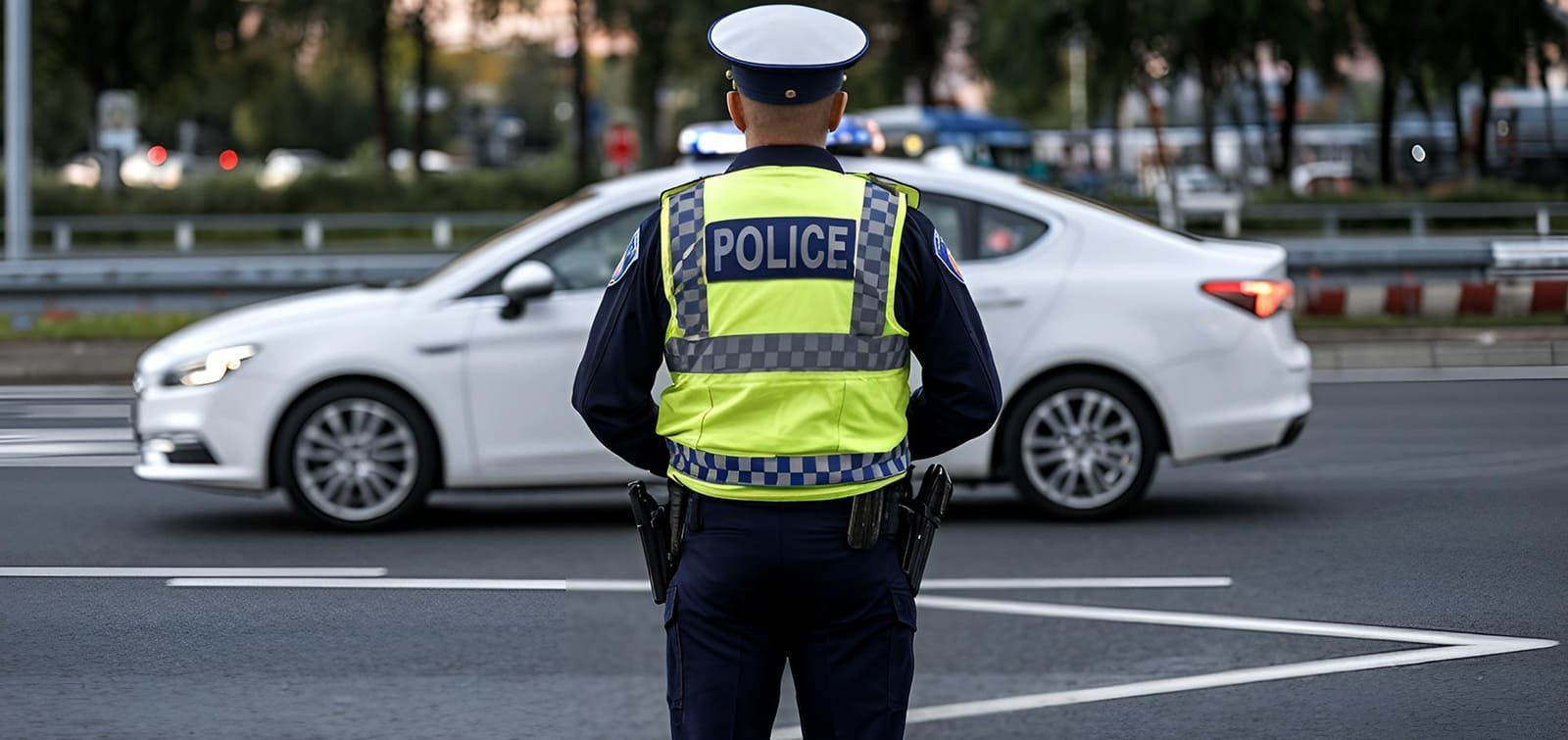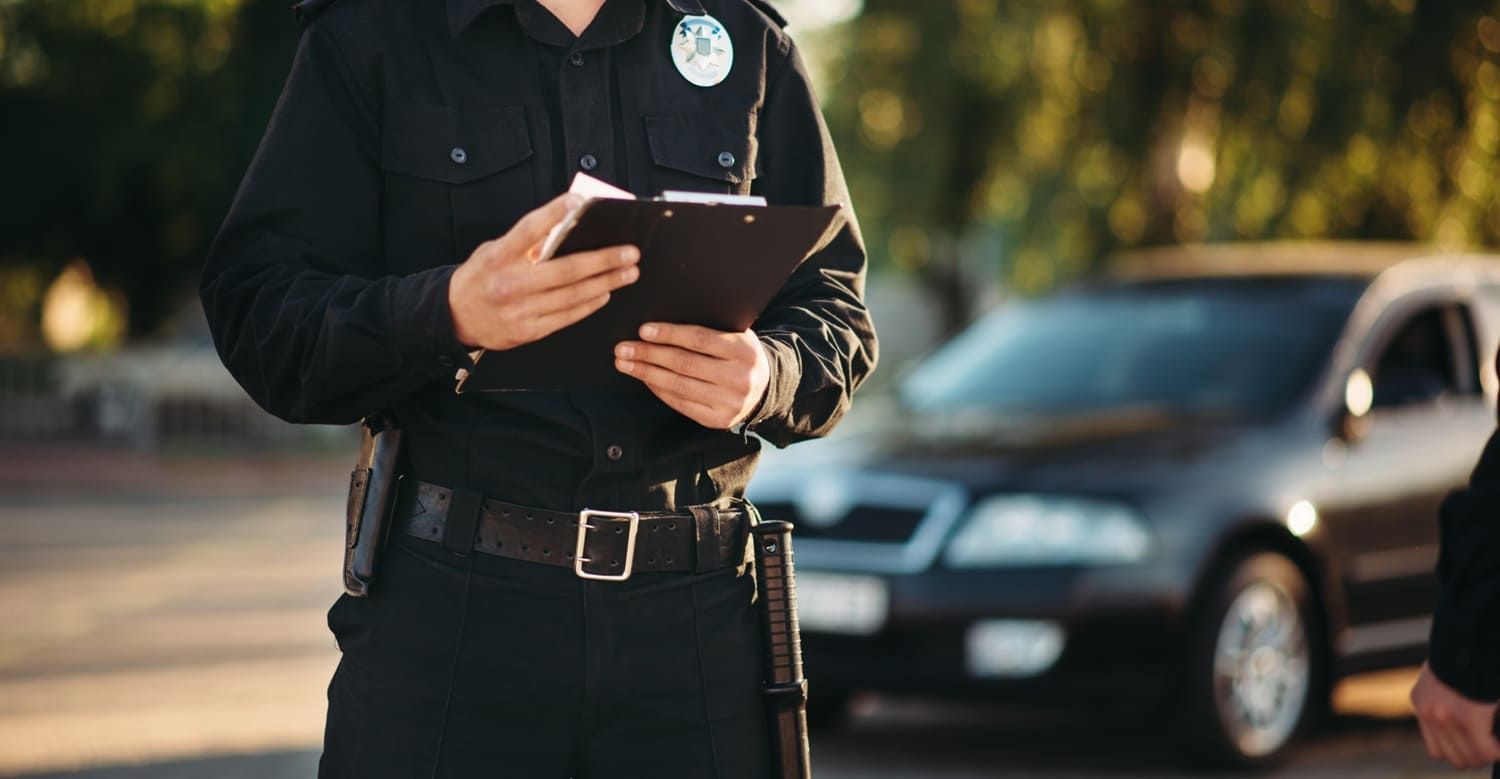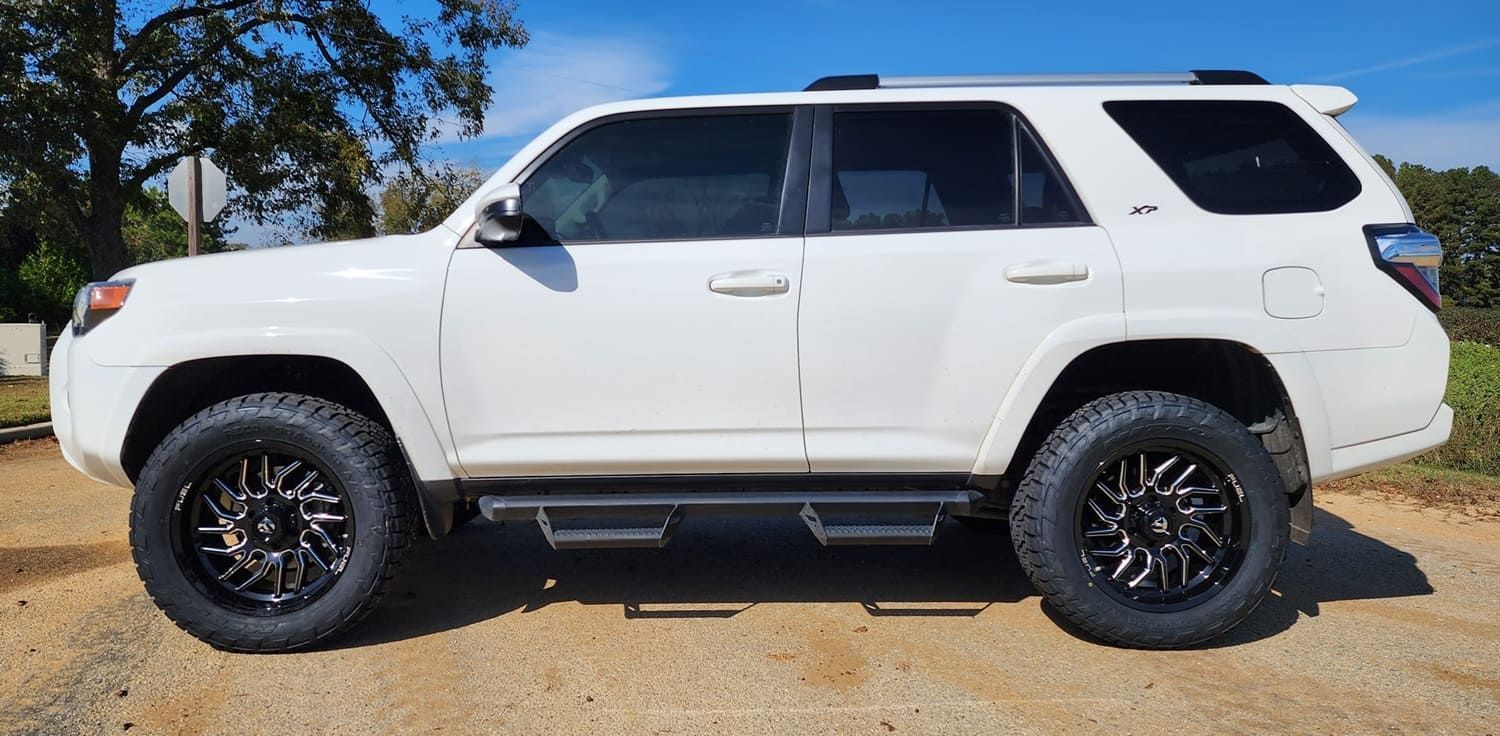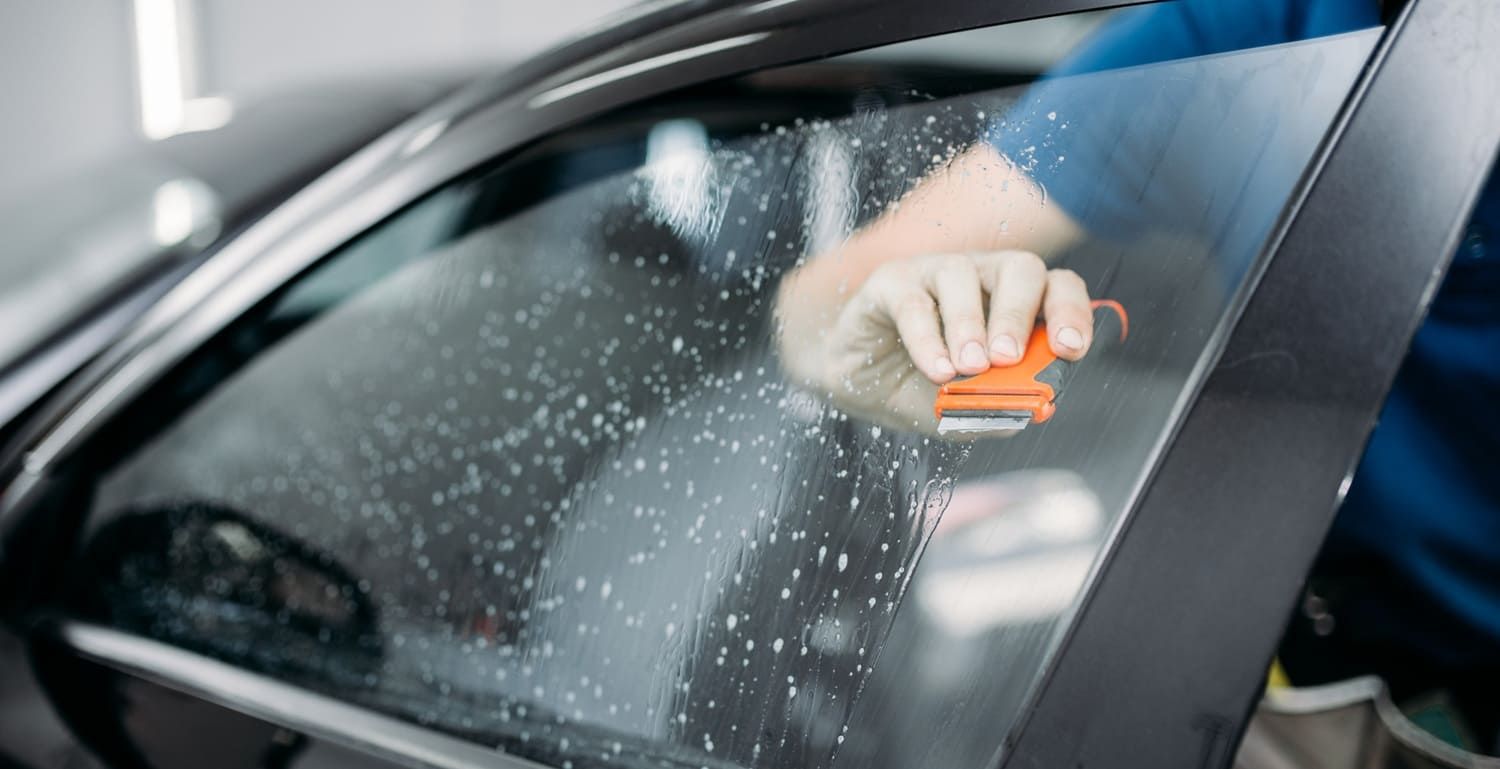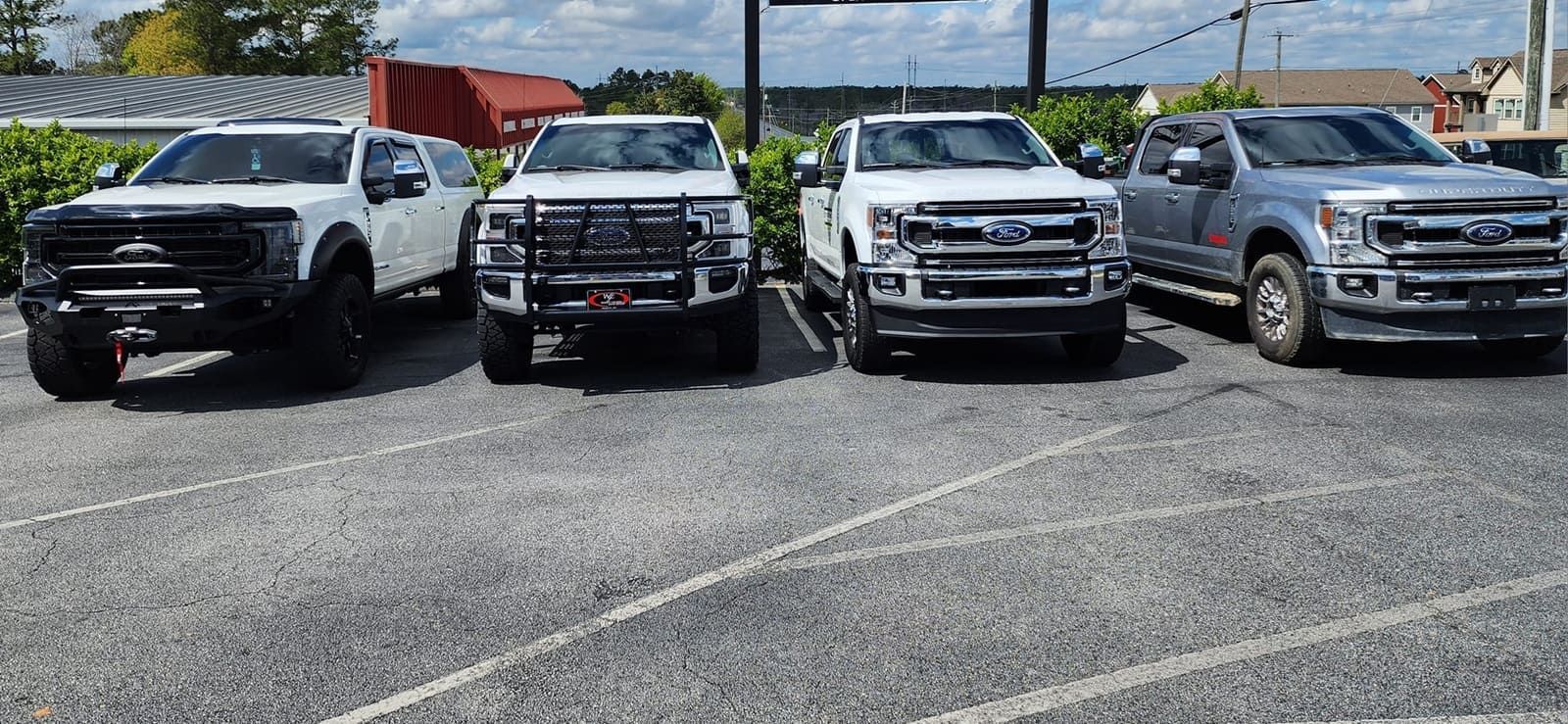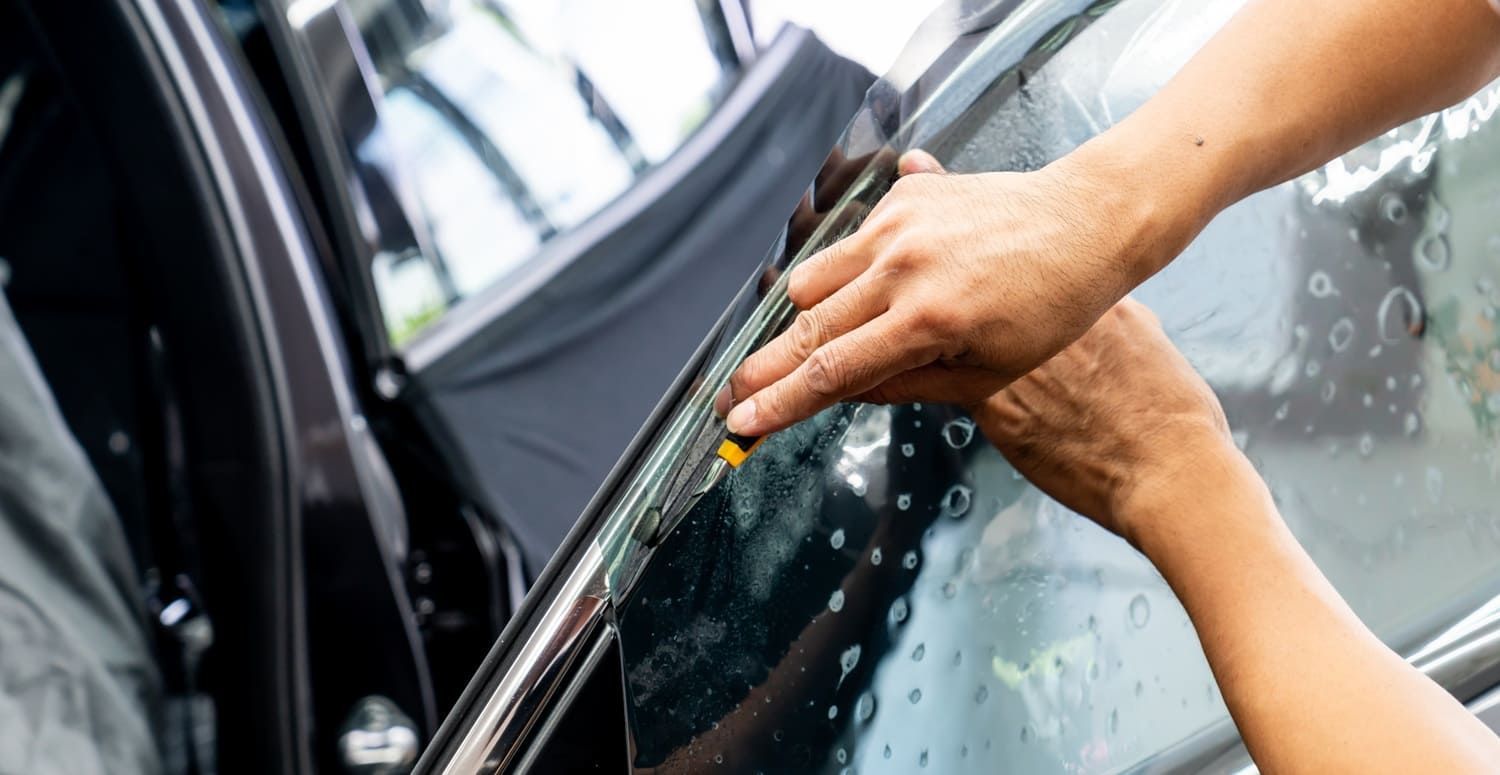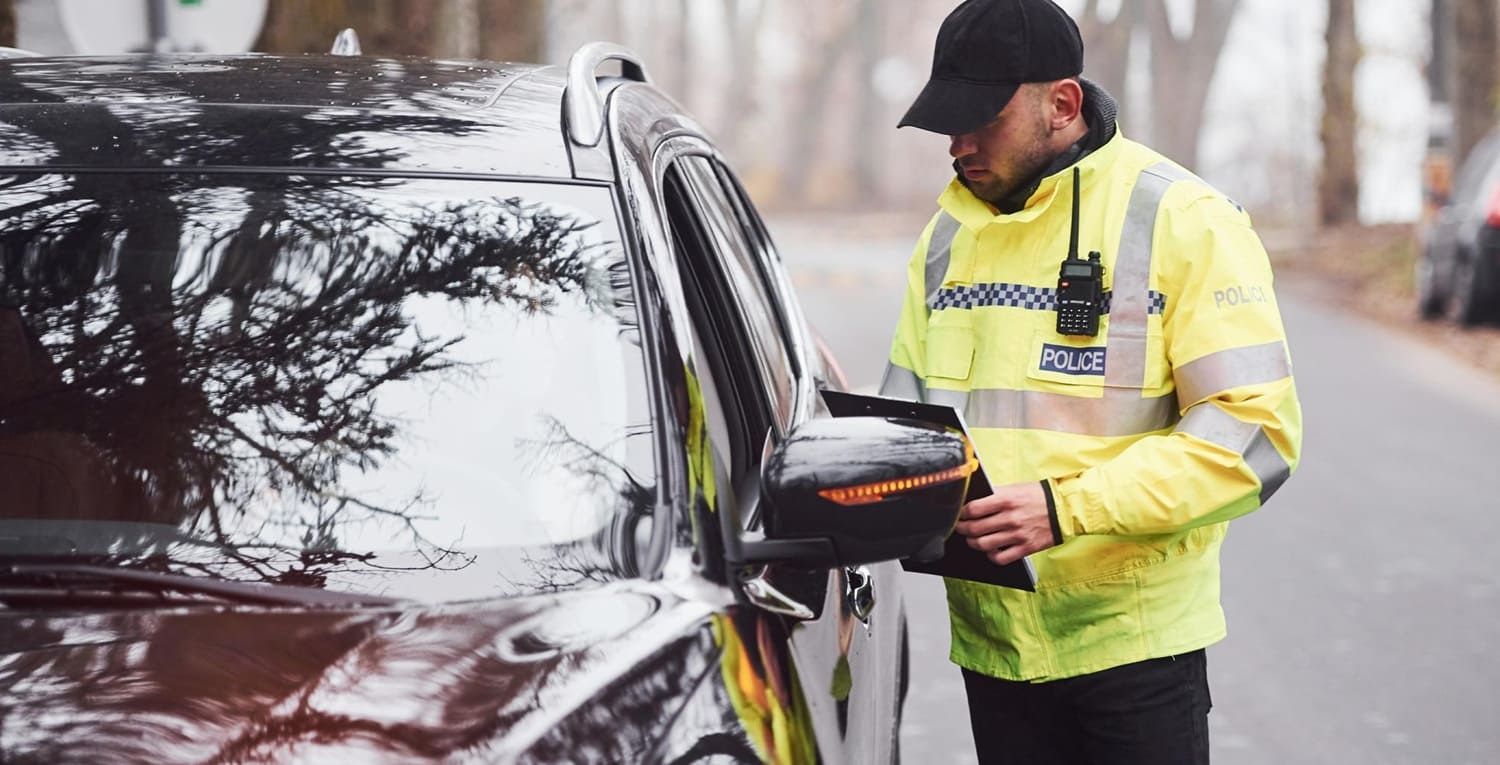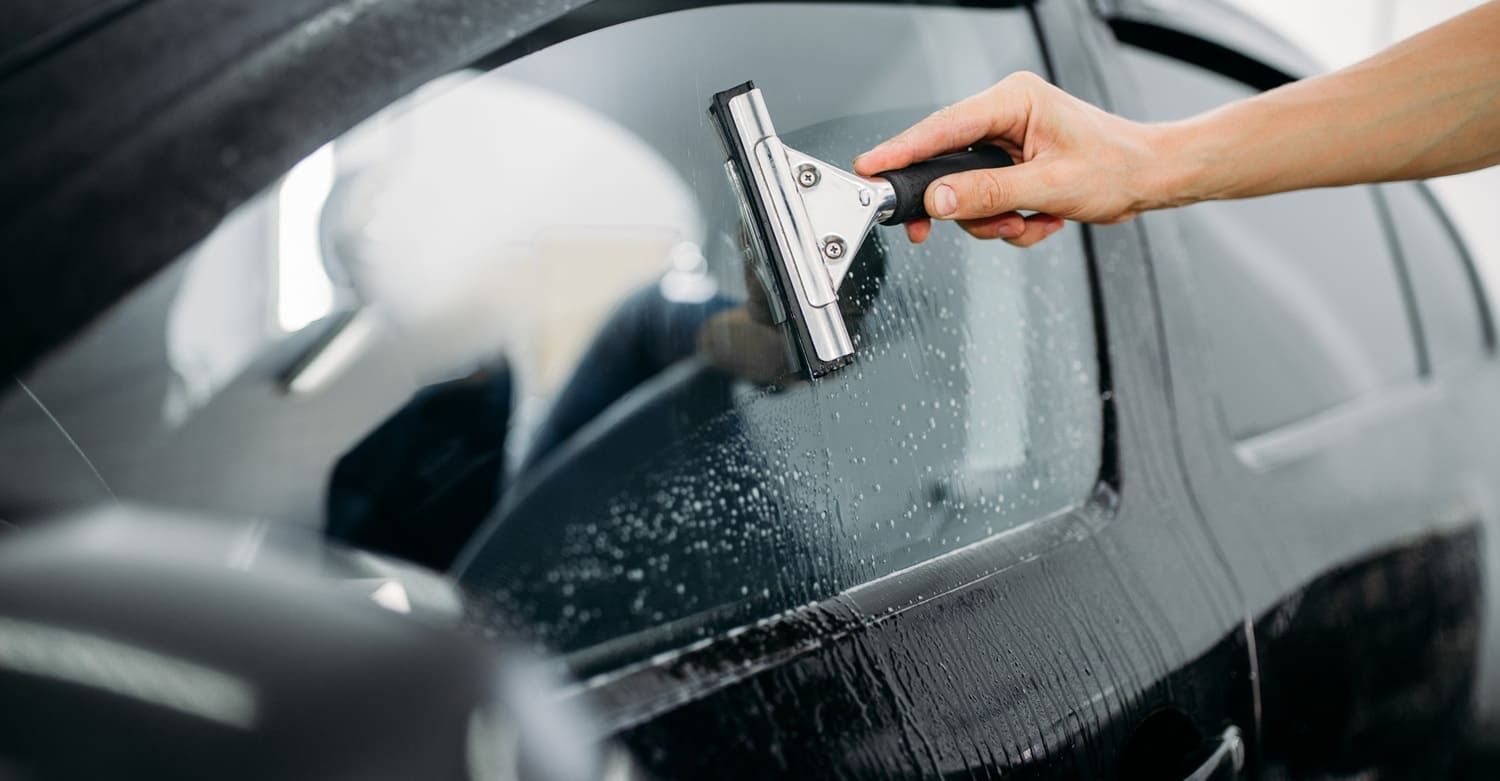Does Tinting My Car Windows Affect Cell or GPS Signal?
Tinting car windows is a popular choice for many vehicle owners. It offers privacy, reduces glare, and enhances the car's appearance. But does it affect electronic signals like cell or GPS?
This question is common among those considering window tinting. The answer depends on the type of tint used. Metallic tints can interfere with signals due to their metal content.
Non-metallic options, like ceramic or carbon-based films, are less likely to cause issues. Understanding these differences is crucial for making an informed decision.
In this article, we explore how window tinting can impact electronic signals. We also provide tips for choosing the right tint to minimize interference.
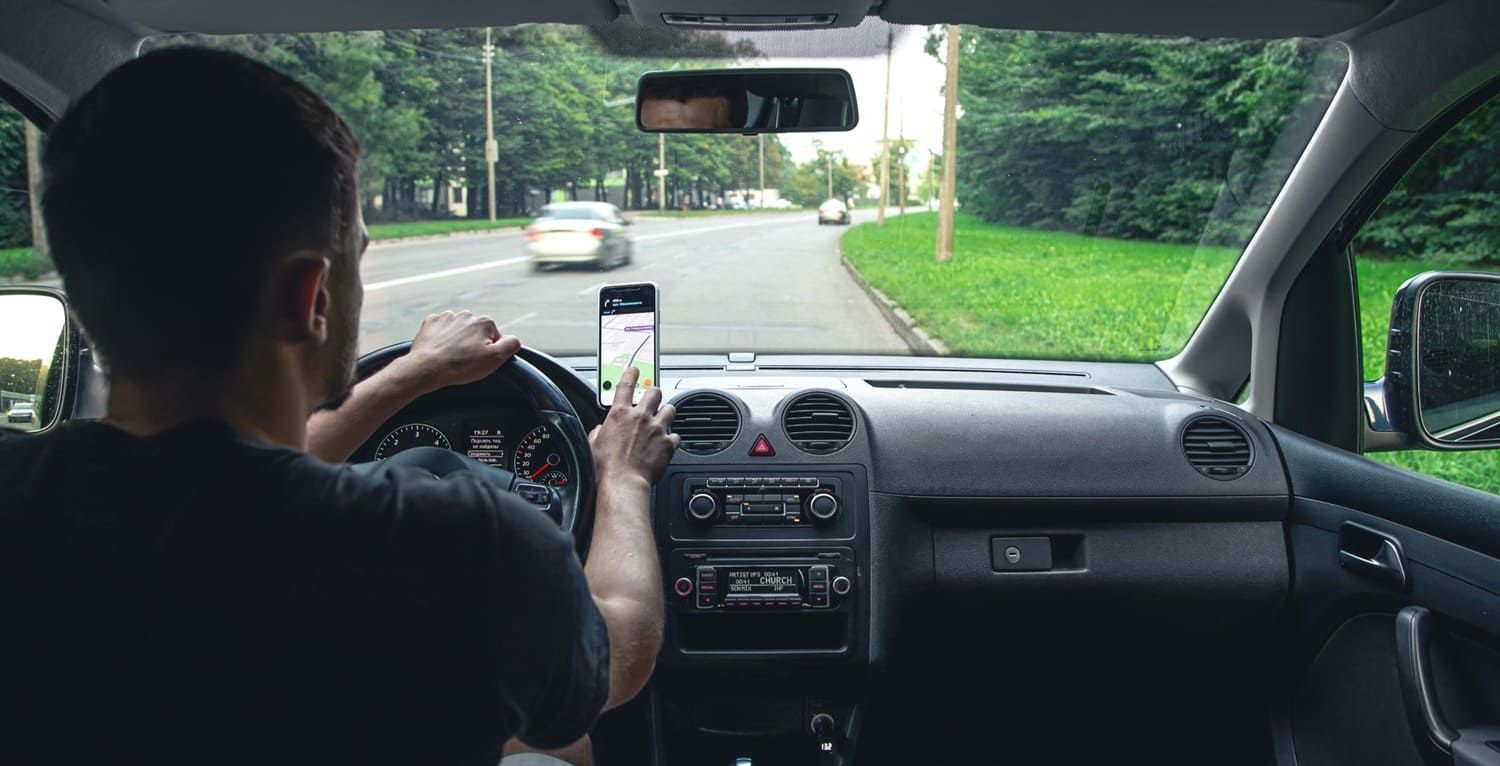
Understanding Window Tinting and Electronic Signals
Window tinting has become a common modification for vehicles. It provides benefits like privacy and protection from UV rays. Yet, drivers often worry about its effects on electronic signals.
Understanding the interaction between window tints and signals is important. Signals such as cellular and GPS operate on electromagnetic frequencies. These can be affected by the materials used in tints.
Some tints contain metallic particles that block or reflect signals. Non-metallic tints use materials that do not interfere with signal frequencies. Knowing the composition of the tint helps avoid these issues.
Before choosing a tint, consider the electronic systems in your car. Newer cars often have advanced technology dependent on strong signal reception. Select a tint that caters to your car's needs without compromising on style or privacy.
Types of Window Tint and Their Impact on Signal
Understanding the different types of window tints is crucial. Each type has its own effect on electronic signals. You need to choose wisely based on your needs.
- Metallic Tints: Often lead to signal interference.
- Ceramic Tints: Less likely to cause issues with signals.
- Carbon Tints: Provide a balance of aesthetics and function.
- Dyed Films: Mainly for visual appeal without signal disruption.
Metallic tints contain particles that can interfere with electromagnetic frequencies. They can impact cell and GPS signals significantly. On the other hand, non-metallic tints are designed to minimize this problem.
Ceramic and carbon tints maintain signal strength better. They are ideal for those who rely on strong connectivity. With various tint options available, you can find one that suits your needs.
Think about what you prioritize before tinting your windows. Whether it’s aesthetics, privacy, or signal strength, the right tint makes all the difference.
Metallic Tints and Signal Interference
Metallic tints can provide significant benefits, like reducing heat and glare. However, they often cause signal interference. This is due to the metal particles embedded in the tint film.
These metal particles can block or reflect electromagnetic signals. This can affect cell phone reception and GPS navigation systems. Consider this if you rely heavily on electronic devices in your car.
- Advantages: Heat reduction, enhanced privacy.
- Disadvantages: Potential signal interference.
Drivers need to weigh the pros and cons of metallic tints. If you frequently face signal issues, another type might better serve you. Consider your location and driving habits before choosing metallic tints.
Non-Metallic Tints: Ceramic, Carbon, and Dyed Films
Non-metallic tints offer a modern solution for avoiding signal issues. They use advanced materials that have fewer effects on electronic signals. This makes them an excellent choice for tech-savvy drivers.
Ceramic tints are highly regarded for their non-conductive nature. They allow signals to pass through without interference. Moreover, they provide excellent heat and UV protection.
- Ceramic Tints: Best for minimal signal disruption.
- Carbon Tints: Known for strong UV protection and aesthetic appeal.
- Dyed Films: Ideal for budget-friendly options.
Carbon tints add a sleek, dark appearance to your vehicle. They do not interfere with electronic signals like metallic tints. Dyed films offer less functionality but remain popular for cost-conscious consumers.
Ultimately, non-metallic tints provide a balance of aesthetics, privacy, and uninterrupted signal reception. They’re perfect for those who love both technology and style. Choose based on what aspect—appearance or function—is most crucial for you.
Real-World Effects: Cell, GPS, and Radio Signals
In the digital age, our cars are more than just vehicles. They are moving technology hubs, reliant on strong signals. Window tinting can affect how these signals behave.
Cell signals can weaken with certain tints. Metallic tints, for instance, can block or distort the connection. If you depend on your phone for calls or streaming, consider the tint type.
Similarly, GPS systems might not function optimally. Accurate positioning requires a clear signal. If your tint disrupts this, navigation can become challenging.
- Cell Signals: Often affected by metallic tints.
- GPS Navigation: Accuracy can decrease with high interference.
- Radio Signals: Rarely impacted, but possible with metal films.
Radio signals usually traverse tints without much hassle. However, metallic tints can occasionally cause issues. While not common, it's something to keep in mind when selecting a tint.
Balancing tint benefits with signal strength is key. Whether it's making calls or directions, strong signal reception enhances your driving experience. Always consider your tech needs when choosing a tint.
LLumar Auto Window Tinting: Minimizing Signal Interference
LLumar Auto Window Tinting offers innovative solutions for those worried about signal interference. Their products focus on modern technology and quality craftsmanship.
These tints minimize issues by using non-metallic materials. Opting for ceramic or carbon-based options can help. They allow signals to pass freely while still delivering desired benefits.
- Non-Metallic Materials: Reduce interference.
- Ceramic Options: Maintain signal strength.
- Carbon Tints: Provide clarity and connectivity.
For car owners, LLumar tints can be an excellent choice. They ensure that neither style nor function is sacrificed. Choosing these products means enjoying a more seamless driving experience.
Through technological advancement, LLumar stands out in the market. Their tints support both aesthetic appeal and signal performance, giving drivers peace of mind.
Factors That Influence Signal Interference
Signal interference can be a nuanced issue. It depends on several factors, not just the type of tint. Understanding these factors helps in making an informed decision.
First, the strength of the signal itself is crucial. A weak signal might struggle even with a minor obstruction. In contrast, a robust signal often manages well despite potential interference.
The design of your car also plays a role. Cars with built-in antennas may handle interference better. Placement of these antennas impacts overall signal strength.
- Signal Strength: Weak signals are more susceptible.
- Car Design: Built-in antennas offer advantage.
- Environmental Factors: Busy areas can increase issues.
Finally, the surrounding environment matters. Urban areas filled with obstructions could exacerbate signal issues, making thoughtful tint choice important.
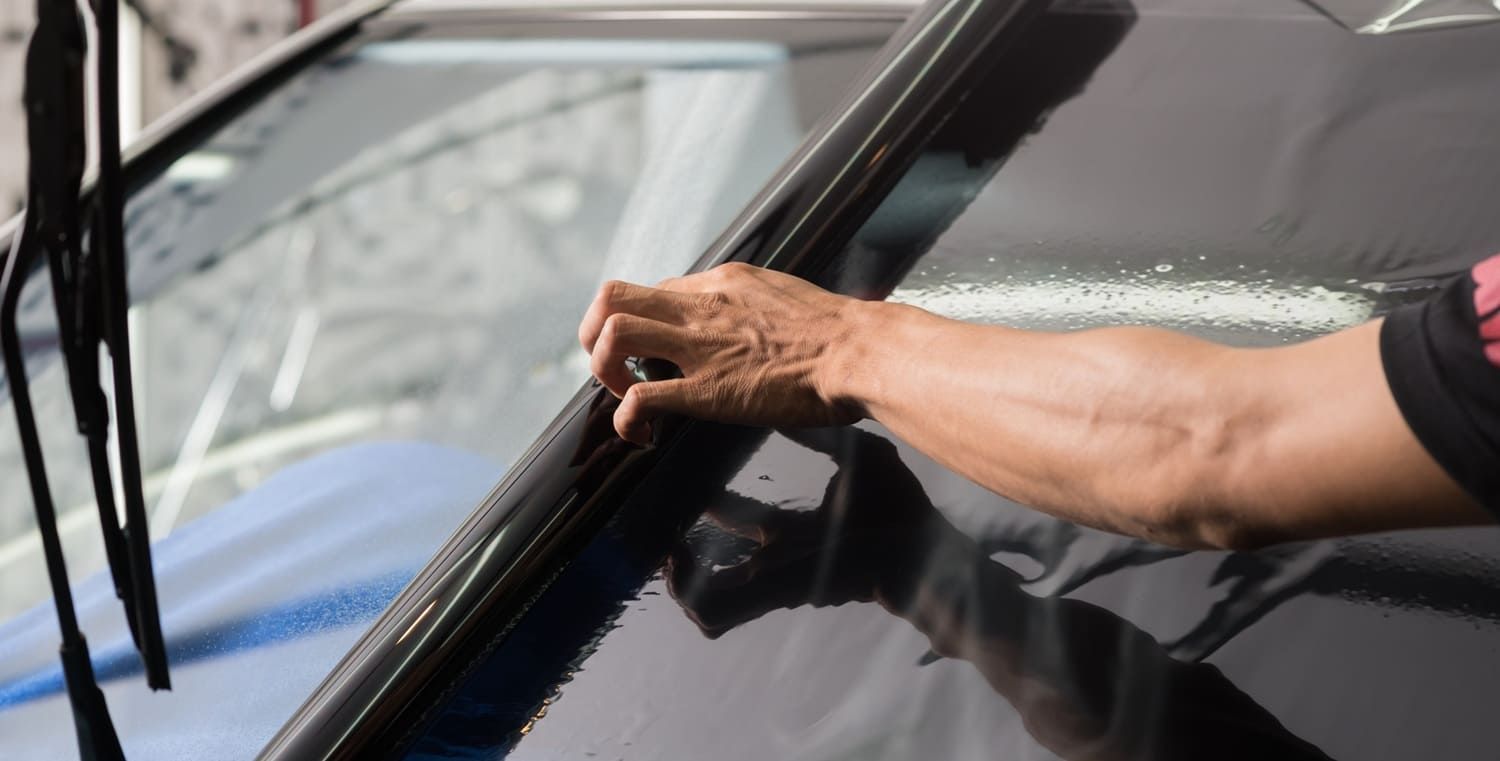
How to Test and Troubleshoot Signal Issues After Tinting
Testing for signal interference after tinting is straightforward. Start by using your cell phone inside and outside the car. Compare the signal strength in both scenarios.
Next, assess GPS functionality. Drive around familiar areas to check navigation accuracy. Note any delays or errors in signal reception.
If issues arise, consult your tint installer. They can offer solutions based on the tint type and installation quality.
- Phone Signal Test: Check bars inside and outside the car.
- GPS Test: Monitor navigation for discrepancies.
- Consultation: Seek professional advice for persistent issues.
Effective troubleshooting ensures that you're not sacrificing connectivity for aesthetic.
How to Test and Troubleshoot Signal Issues After Tinting
Testing for signal interference after tinting is straightforward. Start by using your cell phone inside and outside the car. Compare the signal strength in both scenarios.
Next, assess GPS functionality. Drive around familiar areas to check navigation accuracy. Note any delays or errors in signal reception.
If issues arise, consult your tint installer. They can offer solutions based on the tint type and installation quality.
- Phone Signal Test: Check bars inside and outside the car.
- GPS Test: Monitor navigation for discrepancies.
- Consultation: Seek professional advice for persistent issues.
Effective troubleshooting ensures that you're not sacrificing connectivity for aesthetic.
Legal Considerations and Professional Installation
Before tinting, check local laws on window tints. States have different regulations on permissible tint levels. Adhering to these laws avoids legal troubles and possible fines.
Using a professional installer ensures a compliant and quality job. They are familiar with legal limits and possess expert skills. Poor installation can lead to issues like bubbling or peeling.
Professional installers help you choose the right tint. Their experience ensures the tint meets your needs without breaking the law.
- Local Laws: Review state regulations on tint levels.
- Professional Installation: Ensures quality and compliance.
- Tint Selection: Professionals help meet legal requirements.
Additional Benefits of Quality Window Tinting
Quality window tinting offers more than just signal protection. It enhances privacy, reducing visibility into your car. This is especially beneficial for safety and personal comfort.
Tinting also lowers heat inside the vehicle. By blocking solar heat, your car stays cooler, reducing the need for constant air conditioning. This can lead to improved fuel efficiency.
Furthermore, it provides protection from harmful UV rays. This not only safeguards passengers but also preserves the car's interior. Fading and cracking of upholstery are minimized.
- Privacy: Reduces visibility for enhanced security.
- Heat Reduction: Keeps interior cooler, cuts air conditioning use.
- UV Protection: Guards passengers and interior materials.
Tips for Choosing the Right Window Tint
Selecting the right window tint involves balancing appearance, function, and legal compliance. Consider the benefits each tint type offers and how they align with your needs. Consulting with a professional installer can provide valuable insights into the most suitable options.
When evaluating tints, keep these factors in mind:
- Material: Choose between metallic and non-metallic options.
- Regulations: Check local laws on tint levels.
- Purpose: Determine if privacy, UV protection, or aesthetics are priorities.
Test samples on your car to see their effect on signal reception and appearance. This ensures the best choice for your vehicle.
Conclusion: Balancing Style, Comfort, and Connectivity
Choosing the right window tint involves more than just enhancing your car's look. With X-Treem Automotive & Tinting in Statesboro, GA, a trusted LLumar Dealer and premier car window tinting installer near you, you’ll get expert guidance to ensure comfort, style, and performance. Non-metallic tints offer a practical balance, minimizing the risk of signal interference while still delivering heat reduction, UV protection, and privacy.
Consulting professionals like the team at X-Treem Automotive & Tinting and understanding the types of tints available can help you make informed decisions. Prioritizing quality and performance over mere appearance ensures a seamless driving experience. By doing so, you enjoy all the advantages of window tinting without compromising signal quality.
Ultimately, a well-chosen tint can make your driving experience both stylish and connected. Contact X-Treem Automotive & Tinting in Statesboro, GA today for your free estimate and discover how professional LLumar tint installation can transform your vehicle.
FAQs About Window Tinting and Signal Interference
Can window tinting affect cell phone signal?
Yes, if you use metallic tint. Ceramic and dyed films don’t cause issues.
Does tinting interfere with GPS navigation?
Metallic tint may reduce signal strength, but ceramic tint will not.
Which type of tint is safest for electronics?
Ceramic tint. It blocks heat and UV without blocking signals.
Why does metallic tint cause interference?
It contains metal particles that can disrupt radio and signal waves.
Will window tinting affect Bluetooth connectivity?
Metallic films might, but ceramic and carbon films are safe.
Can tinting reduce AM or FM radio quality?
Yes, metallic films can, but non-metallic films won’t.
Is ceramic tint more expensive than metallic tint?
Yes, but it offers better performance without electronic interference.
Should I avoid metallic tint if I rely on GPS and phones?
Yes. Choose ceramic tint to ensure clear, reliable signals.


